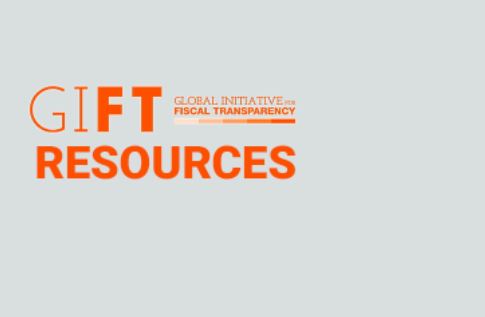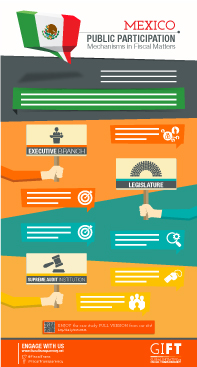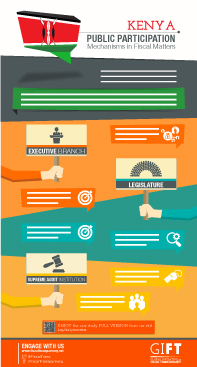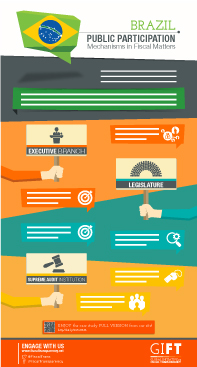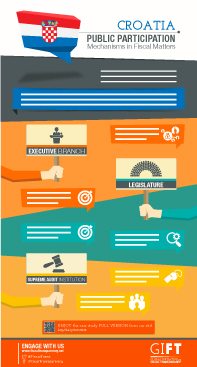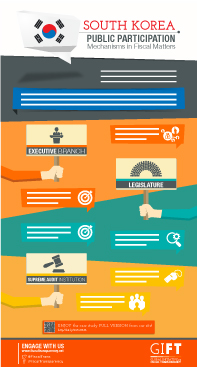The Philippines
Since 2010, various efforts have been made to enhance public participation in national fiscal and budgetary policy in the Philippines. These efforts are the result of a combination of factors: a new government that took power with an anti-corruption and transparency platform; a number of successful collective action efforts; a strong desire to improve the economic outlook of the country, including its international credit rating; and strong donor support for CSO capacity building in budgetary policy. The ten mechanisms for the Philippines illustrate the most prominent examples of direct public participation from the legislative (one mechanism), the executive (seven mechanisms), and the audit branch (two mechanisms).
Mexico
Mexico is taking positive, but timid steps towards fiscal accountability and increased public participation in national-level fiscal and budget processes. Public participation occurs at multiples stages of the national policy and budget cycle, and mostly through expert-based, pro-transparency civil society organizations. The infographics for Mexico introduce six mechanisms: four for the executive branch, one for the legislature and one for the Supreme Audit Institution.
Kenya
Following the adoption of Kenya’s new Constitution in 2010 – itself the result of a long and unprecedented struggle for citizen participation in public processes -, the country saw a number of initiatives and concepts that serve to increase public participation, such as the adoption of a rights-based approach and the devolution of power, which provides for more opportunities for citizen engagement; an increased role for the Kenyan legislature, which allows citizens, experts and NGOs to directly participate in the budget enactment process; and there is now a more specific focus on direct participation in public finance generally. Article 10 of the Constitution enshrines public participation as a national value and principle of governance.
The infographics for Kenya illustrates six mechanisms of direct public participation in the budget process: two from the executive, two from the legislature, and two from the audit branch.
Brazil
Brazil has a number of institutions enshrined in its 1988 Constitution and in several statutes that encourage and support public participation in politics and the budget. Brazil held the highest score in South America in the Open Budget Index of 2012. However, Brazil scored much lower on participation specific questions on the 2012 Open Budget Index. While Brazil has been a leader in crafting initiatives that increase transparency and accountability, the existing mechanisms still lack the requisite strength for the citizenship to assert greater control over the budget process.
The infographics for Brazil introduces six mechanisms of direct public participation in the budget process: four from the executive and two from the legislature.
Croatia
Croatia adopted, over the course of last 15 years, a series of reforms that are designed to promote transparency and participation in fiscal policy. The push to adopt new institutional procedures came from Croatia’s accession to the European Union and its OGP membership. There is a disconnect between the higher OBI scores, based on formal rules, and the lived reality of the new public participation institutions, with the most effective mechanisms taking form in the legislative branch. The infographics for Croatia introduce five public participation mechanisms: three from the executive branch, two from the legislature, and one from the Supreme Audit Institution.
South Korea
As a result of the democratic transition in 1987, public participation in fiscal decision-making and budget transparency have both greatly improved in South Korea. Most reforms were implemented in the mid-2000s under the Three Plus One Fiscal Reforms Program; these included the introduction of the National Fiscal Management Plan, Top-Down Budgeting, Performance Management System, and the Digital Accounting System. The simultaneous application of these reforms have greatly increased their efficiency.
The infographics for South Korea introduce six mechanisms from the executive branch, one from the legislature and one from the Supreme Audit Institution.
South Africa
Despite legal reforms that provide opportunities for public participation in the budget, South African citizens have little influence over how public money is spent. The absence of direct formal participation in the budget process led to the country, while ranking second, scoring only 19 out of 100 for participation on the Open Budget Index’s measure of transparency. In 2015, South Africa scored fifth in the world in participation, but the efficacy of citizen participation in the budget cycle is still debatable. The infographics introduce six mechanisms of public participation from the budget cycle: four from the executive, one from the legislature, and one from the audit stage.
Canada
Public participation at the federal level in Canada occurs in most aspects of budget processes from formulation to oversight. Approaches range from one-off consultations on specific issues or bills to more institutionalized approaches for regular engagement on pre-budget consultation, while participants range from non-experts to experts. The nine mechanisms introduced by the infographics include four from the executive branch, two from the legislature and three from the Supreme Audit Institution.

